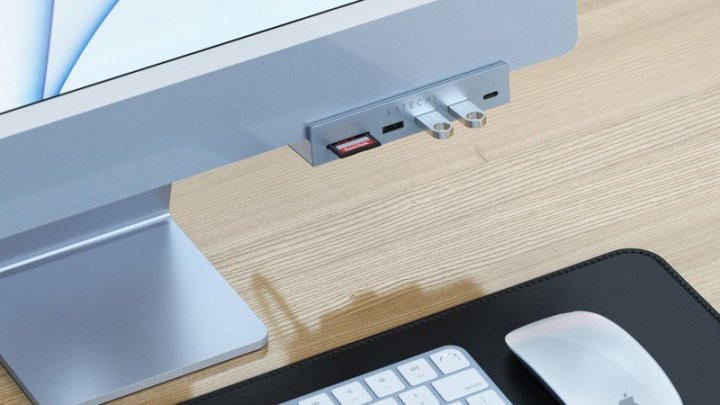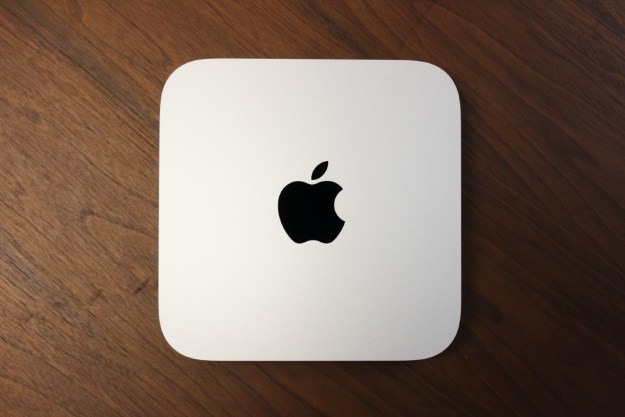Satechi debuted its most recent Apple accessory today, a small USB-C Clamp Hub that’s especially manufactured for the M1 24-inch Mac. The problem it’s attempting to solve is simple: The iMac’s severe lack of ports.
Satechi is a consumer electronics brand located in San Diego, California that makes USB-C products and modern tech accessories. Its latest accessory is a handy USB-C Clamp Hub, a sleek adapter that attaches to the bottom right of your M1 iMac.

It is specially designed for the new ultra-thin Apple machine, with the company even matching some of its colors, silver and blue, to those of the 2021 M1 Mac to make sure your setup looks color-coordinated. Since it’s specifically manufactured for the 2021 version, if you have a 2019 or earlier machine, you’ll want to look to Satechi’s other offerings as it has released different models for those PCs as well.
The USB-C Clamp Hub hosts a total of five ports on its front. It aims to provide you with easy access to the ports on the machine’s back. By making use of only one USB-C port on the back of your machine, it makes your setup look much cleaner and more organized. Satechi’s latest release sports a simple and minimal design and easily attaches the expanded I/O of your machine. Its ports include three USB-A ports, one USB-C port, and an SD and microSD card reader.
All three of the Clamp Hub’s USB-A ports provide speeds of up to 5Gbps and don’t require charging. The USB-C port also offers up to 5Gbps and doesn’t need to be charged. The SD and microSD card readers both belong to the UHS-I class and provide speeds of up to 104Mbps. There is also an adjustable knob for fast installation and a snug fit.
Satechi’s Clamp Hub is available at a starting price of $55 with the silver one launching in September and blue arriving in October. You can also pre-order it on the Satechi website anytime you want now.
Editors' Recommendations
- Apple just brought the M1 MacBook Air back from the dead
- Here’s everything we know about the M4 MacBook Pro so far
- The case for buying the M2 MacBook Air over the M3 model
- The MacBook Air M3 has one change that fixes its biggest flaw
- The one problem with Mac gaming no one is talking about



